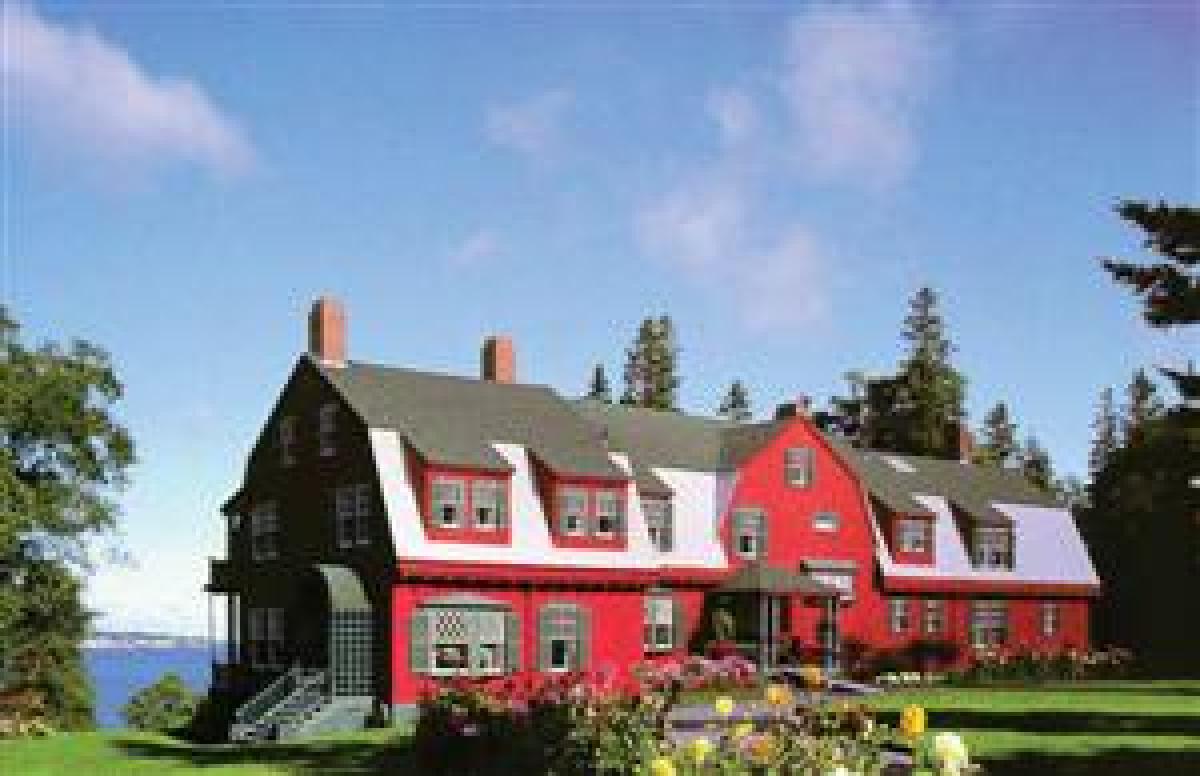When driving onto Campobello Island, one passes through Lubec, Maine-the easternmost town in the United States-and across the Franklin D. Roosevelt International Bridge. Reaching the island pushes the clock an hour ahead in time, for Campobello is part of the Canadian province of New Brunswick and thus in the Atlantic time zone. Figuratively, however, the brief crossing takes a traveler years back in time.
Though modern structures show up here and there, many of the buildings on the island are obviously decades old. The environment is a rustic one that emphasizes the natural beauty of the area, including rocky headlands and panoramic views of tree-lined waters. The pace is unhurried and the island devoid of the fast-food restaurants, bright neon lights, and congestion typical of so many places.
During a recent visit to the island, my wife, Karen, and I particularly enjoyed stopping in at the Roosevelt Campobello International Park, which was established by treaty in 1964 and opened in 1967. The employees are citizens of Canada or the United States-and in some cases both. We felt a warm sense of hospitality from two women who went out of their way to be helpful: interpretation manager Anne Newman and guide-interpreter Betty Jo Brine. Among other things, they talked of Franklin Roosevelt's love of sailing. The park's logo is based on a design he created for his matchbooks-a sailboat partly formed by his initials.
Though he never wore the uniform, FDR was the most enthusiastically naval of our presidents. From 1913 to 1921 he served as assistant secretary of the Navy. As President from 1933 to 1945, he treated the Navy almost as a personal fiefdom. He was intimately concerned with the service's personnel moves and often made voyages on board warships.
FDR's parents first brought him to the island in 1883, when he was a year old, and they returned many summers after that. In 1909, his widowed mother purchased the "cottage" that is the centerpiece of the international park. Roosevelt himself had the house enlarged as his family grew to include four sons and a daughter.
The house still holds much of the original furniture from the time the future President made it a second home. It appears similar to the way it did in 1920, though electricity has since been added. When the Roosevelts were there, kerosene lamps and candles provided the illumination at night. There was no telephone. The plumbing also reflected a long-ago time. Fresh water was scarce, stored in a tank supplied by windmill or pump. FDR's wife, Eleanor, rationed the children's bathwater to no more than three inches.
Inside the structure are many of the family's possessions. Model sailboats are in evidence, as are a model airplane, canoes, bicycles, and tennis rackets. On the second floor is a schoolroom in which the Roosevelt children received their lessons each morning from a tutor before being released for fun and games in the afternoon. A huge megaphone was Eleanor's means of calling in the children when it was time for classes or meals. One of the family's sons, Franklin D. Roosevelt Jr., was born in the upstairs master bedroom in 1914. In addition to the children's rooms, the father's political adviser, Louis Howe, had a bedroom, and there were several rooms for servants.
Unhappiness was also associated with the location, because it was at Campobello in the summer of 1921 that FDR first experienced symptoms of the polio that would leave his lower body paralyzed for the rest of his life. Pictures of his previous times there show him as a robust individual who enjoyed canoeing, golfing, hiking, swimming, fishing, and other active pursuits. After the disease struck, there would be no more of those and no more regular summer respites. After becoming President, he returned to his island home for only three brief visits.
For me the most striking item in the house was FDR's battered gray fedora, because it was so much a part of his identity. I had seen that hat, or its cousins, in dozens of photos. One famous shot shows the President in profile, a grin on his face, and his cigarette holder at a jaunty angle. Other pictures of him wearing such a hat appeared when he ran for a fourth term in 1944.
Because of the care with which it has been preserved and because the artifacts of daily life are visible throughout, the house on Campobello still retains the personality of the family that summered there so long ago.




